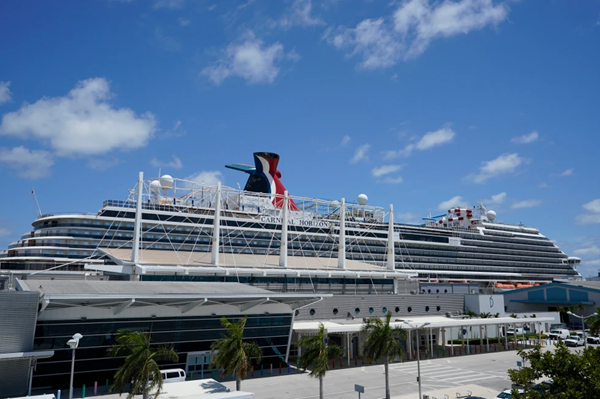Military’s Ospreys are cleared to return to flight, 3 months after latest fatal crash in Japan

WASHINGTON (AP) — The Osprey, a workhorse aircraft vital to U.S. military missions, has been approved to return to flight after an “unprecedented” part failure led to the deaths of eight service members in a crash in Japan in November, Naval Air Systems Command announced Friday.
The crash was the second fatal accident in months and the fourth in two years. It quickly led to a rare fleet-wide grounding of hundreds of Ospreys across the Marine Corps, Air Force and Navy.
Before clearing the Osprey, which can fly like an airplane and then convert to a helicopter, officials said they put increased attention on its proprotor gearbox, instituted new limitations on how it can be flown and added maintenance inspections and requirements that gave them confidence it could safely return to flight.
The entire fleet was grounded Dec. 6, just a week after eight Air Force Special Operations Command service members were killed when their CV-22B Osprey crashed off Yakushima island.
However, the decision by the Department of Defense to return to flight before separate congressional investigations on the Osprey program are complete drew criticism from the chair of the House Oversight Committee.
A former Osprey pilot familiar with the investigation confirmed that the component in question is part of the proprotor gearbox, a critical system that includes gearing and clutches that connect the Osprey’s engine to the rotor to turn it.
The services have done a “deep dive” into the proprotor gearbox, and the new safety measures “will address the issues we saw from that catastrophic event,” the head of Air Force Special Operations Command, Lt. Gen. Tony Bauernfeind, said Wednesday.
“I have confidence that we know enough now to return to fly,” he said.
The proprotor gearbox system as a whole is a recurring trouble spot for the Osprey. Service safety data obtained by The Associated Press show dozens of instances among the Marine Corps and Air Force Ospreys in which power surges, sudden loss of oil pressure due to leaks, engine fires or chipping — when the metal components inside the gearbox shed sometimes dangerous metal chips — have damaged the proprotor gearbox in flight, sometimes requiring emergency landings.
The services are also looking closely at the material that the failed part is made of and how it is manufactured, Bauernfeind said. NAVAIR is also running further tests to give the services more insight into why the component failed.
“It was a single component that failed in such a way that led to catastrophic consequences,” Bauernfeind said.
After that testing is complete, he said, some of the operational safety controls now placed on the Osprey may be lessened “to give us greater flexibility with the platform.”
The proprotor gearbox failure was first reported by NBC News.
The government of Japan has also been briefed on the findings and the military’s plan to address the issue, the officials said. Japan also grounded its fleet of 14 Ospreys after the crash.
Crews have not flown now for more than 90 days — a factor that will make their return to flight more dangerous. The services said Wednesday they are taking a cautious approach that could last from 30 days to several months to retrain their crews before their Osprey squadrons are back to normal flight operations.
In future needs to counter China, the military has planned on using the Osprey in the Indo-Pacific to operate throughout islands that lack the airfields necessary for traditional aircraft.
But it has also been a controversial, first-generation design of military tiltrotor technology that has recorded more than 14 major accidents that have killed 59 people and in some instances led to the loss of the aircraft, which costs between $70 million and $90 million depending on the variant.
None of the services is planning on new production orders of the V-22, which is produced by a joint venture between Bell Flight and Boeing. The Army has contracted with Bell Flight to buy the Osprey’s successor, the Bell V-280 Valor, which is a tiltrotor like the Osprey but smaller and with an important design change — the engines stay in a fixed, horizontal position. On the Osprey, the rotors and entire nacelle that houses the engine and proprotor gearbox tilt to a vertical position when it flies in helicopter mode.
The Marine Corps operates the vast majority of the Ospreys, with more than 240 currently assigned to its 17 squadrons. Its aviation mission is dependent on the aircraft returning to flight, and the Marine Corps is committed to the Osprey remaining in its fleet through the 2050s, said Marine Corps assistant deputy commandant for aviation Brig. Gen. Richard Joyce.
“There is no taking our eye off of V-22 and the years of service life that it has in front of us,” Joyce said.
The Air Force, which has the second most Ospreys in the fleet, with about 50 assigned to its special operations mission, however, suggested on Wednesday it may start to consider other options.
The early concepts for the Osprey date back to the 1980s, when the Iran hostage crisis exposed a need to have an airframe that could move fast and hover or land like a helicopter, Bauernfeind said.
And it’s met that need quite well, but it is still an older platform, he said. “I do think that it’s time for us to start talking about what is that next generation of capability that can replace what the V-22 does.”



